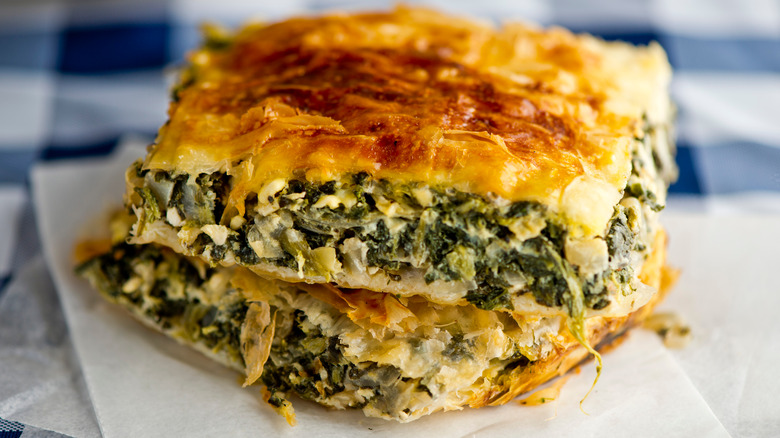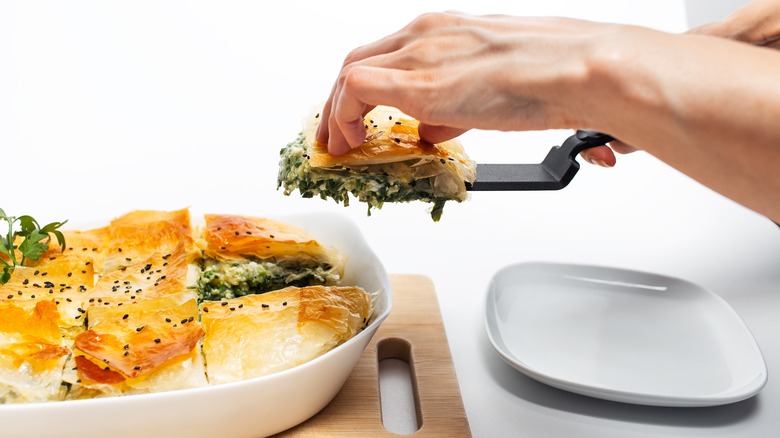Can You Prep Spanakopita Ahead Of Time?
Spanakopita is as fun to say as it is to eat. For novices, it is basically a Greek savory spinach pie. The crust of the pie is made of buttery, shatteringly crisp layers of phyllo dough that encases a mixture of spinach, feta cheese, and eggs with lots of other flavorings thrown in. It can come in the form of rolls, hand pies, and a fully baked pan that you can cut into individual portions. If you walk into any Greek restaurant in America you're likely to find it on the menu, making spanakopita one of the most popular and recognizable Greek dishes in the country, up there in familiarity with gyros and moussaka.
The trickiest part about putting together homemade spanakopita is probably working with the phyllo dough. Phyllo is tissue-thin dough that is sold frozen, in a stack. You need several layers of it to create the crust of spanakopita. Working with one layer at a time, you need to carefully handle each layer and brush it with butter (or olive oil) as you stack sheets on top of one another. Working quickly is necessary so the dough doesn't dry out before you can put the butter on.
With so much care going into the prep, not to mention the fact that you're working with spinach (a notoriously damp green), you might assume that spanakopita needs to be cooked and eaten right away. Surprisingly, that's not altogether necessary. You can actually make it ahead pretty easily.
Leave the baking for later
You can prepare a pan of spanakopita and eat it hours, days, weeks, or even months later, making the dish a delicious option if you're a meal planner, contributing to a potluck, or gifting a meal to someone in need. If you're planning on serving your spanakopita later in the day or even the following evening, just prepare the pan as normal but don't bake it yet. Cover the assembled dish with plastic wrap or foil and refrigerate until you're ready to put it in the oven. Uncover the dish and bake as directed.
As far as preparing spanakopita and saving it for a longer period of time, you can prepare the dish for freezing, but hold off on baking it until the day you need it. After assembling your pan, wrap it in plastic wrap and aluminum foil then pop it in the freezer where it can remain for up to two months. It should thaw completely in the refrigerator before it is baked.
While you can fully complete the recipe — including the baking — before freezing it, you're essentially cooking the spanakopita twice when you pop your pan into the oven to reheat it. This may affect the way it tastes, and possibly dry it out, so we'd reccommend baking after freezing. Still, either way will give you an easy, quick meal for later.

